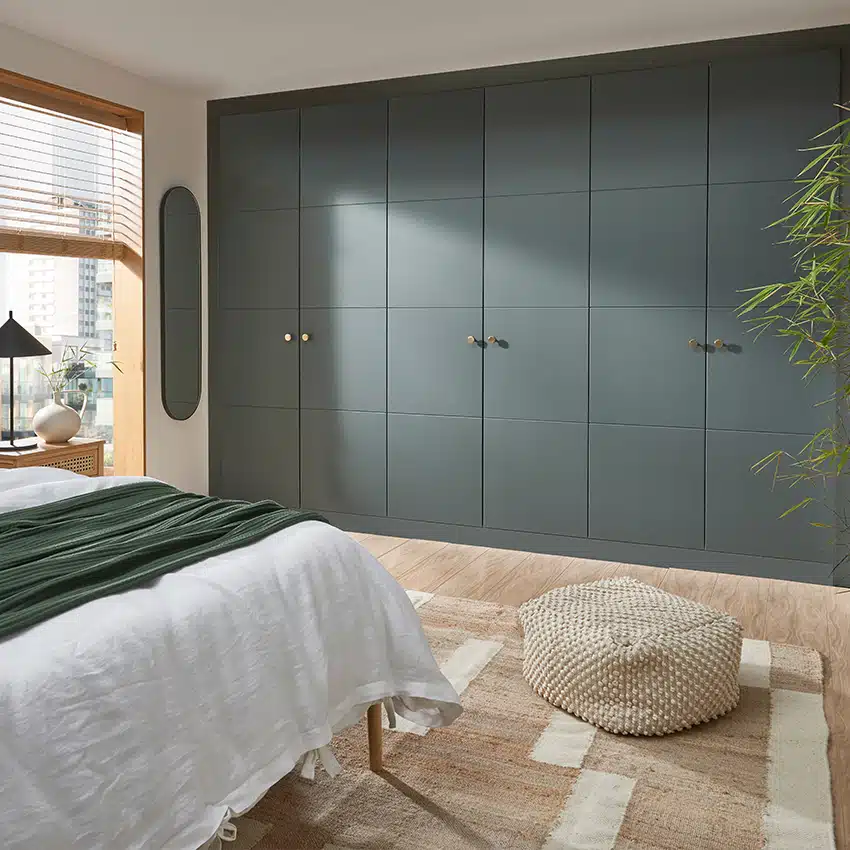Designing Children’s Fitted Bedrooms for Play, Study, and Sleep: Expert Tips for Creating the Ideal Space

Creating a bedroom that caters to a child’s needs for play, study, and sleep is essential to support their growth, creativity, and overall well-being. Thoughtful bedroom design allows children to have spaces where they can focus, unwind, and let their imaginations run wild. It’s about maximising space and creating clear zones for different activities, and an expert designer can help achieve the best layout for each of these zones in a way that’s functional, organised, and fun. Here’s how to design a children’s bedroom that serves as a multi-functional space for play, study, and sleep, with advice on layout, storage, lighting, and involving your child in the process.
Defining the Layout: Creating Dedicated Zones
The layout of a child’s bedroom is critical to ensure there is adequate space for play, study, and sleep. While it may seem challenging to fit multiple purposes into one room, a well-thought-out layout can transform even small rooms into effective multi-use spaces. Here are some tips for creating each zone:
Sleep Zone:
Prioritise placing the bed in a part of the room that’s shielded from noise and distractions. Position the bed near a window for natural light, which helps regulate sleep patterns, but make sure the curtains can fully block light for restful sleep. A good mattress and cosy bedding are essential here, ensuring comfort and supporting healthy sleep habits. Bedtime rituals, like story-time, are easier to enjoy in a peaceful, designated sleep zone.
Play Zone:
The play area should be a safe, open space, ideally on the floor where kids can move freely, spread out toys, and engage in creative activities. If possible, keep this zone separate from the sleep area to reinforce the idea that the bed is for resting, not for active play. A soft rug or floor mats make this area comfortable and provide cushioning for play. In smaller rooms, consider vertical storage solutions to keep the floor space clear for play activities.
Study Zone:
As children grow, having a dedicated area for study is crucial to instil focus and good study habits. Position a desk or small table with storage near natural light, as this can improve concentration and reduce eye strain. Organise the study zone with necessary supplies like pencils, notebooks, and art materials, and keep it free from distractions so that it encourages learning and creativity.
An expert fitted wardrobe designer can help you make the best use of available space by suggesting layouts and multifunctional furniture that support these zones. For example, they may recommend space-saver beds that free up space for a desk or play area, maximising floor space without sacrificing the essentials.
Organising Storage for Efficiency and Clarity
Well-organised bedroom storage solutions can make all the difference in a child’s bedroom, making it easy to maintain a tidy environment while ensuring everything is within reach. Here are some storage tips for each zone:
Sleep Zone: Incorporate storage options near the bed, such as a bedside table with drawers or a bed with storage compartments underneath. These are ideal for holding books, night-time essentials, or toys.
Play Zone: Use bins, baskets, and open shelving for toy storage in the play area. Transparent containers or labelled bins make it easy for kids to find and put away toys on their own. Open shelving displays favourite toys or books, doubling as decor while keeping everything organised.
Study Zone: Keep the study area clutter-free with desk organisers, drawer units, and wall-mounted shelves. Encourage children to place items back after use, promoting a habit of organisation.
Maximising Natural Lighting for Well-Being
Natural light has been shown to improve mood, concentration, and overall well-being, making it especially valuable in a child’s bedroom. Where possible, design the room to maximise natural light by placing the study area near windows and using light, reflective colours that enhance brightness. For play areas, adequate lighting helps create a cheerful and inviting atmosphere, especially on cloudy days or in the evenings.
For bedtime, ensure that windows have blackout curtains or shades to block out light when it’s time to sleep. Dimmable lights or soft night lights can help transition from play or study to sleep, easing the shift into a restful nighttime environment.
Involving Children in the Design Process
Children are more likely to respect and enjoy their rooms when they feel involved in the design process. Including them in decisions helps build their creativity and encourages them to take ownership of their space. Here are some ways to involve your child:
Colour Choices: Let them choose the colour scheme, even if it’s just for accent colours. This can help make the space feel uniquely theirs. If their favourite colour is bold, consider using it in small, changeable ways, like throw pillows, rugs, or wall decals.
Theme Ideas: Encourage kids to select a theme that reflects their interests, whether it’s animals, outer space, or a favourite book character. This theme can be incorporated through wall art, bedding, and decorative items that are easy to update as they grow.
Personalised Touches: Ask your child to help choose artwork, or accessories that reflect their personality. Letting them personalise their study desk or pick out a favourite poster gives them a sense of pride and responsibility in keeping their room neat.
Bedroom Storage Solutions: Kids often enjoy being part of the organising process. Teach them how to use different storage solutions, making it a fun experience by turning tidy-up time into a game or reward system.
Final Thoughts
Designing a child’s bedroom with dedicated zones for play, study, and sleep sets a foundation for a balanced, healthy lifestyle. By carefully considering the layout, organising with effective storage solutions such as fitted wardrobes, making the most of natural lighting, and involving your child in the design process, you’ll create a space that’s both functional and enjoyable. Consulting with an expert fitted bedroom designer can further enhance the bedroom’s functionality, helping make the most of even small spaces.
With a little planning, your child’s room can transform into a sanctuary that grows with them, fostering creativity, learning, and restful sleep.












